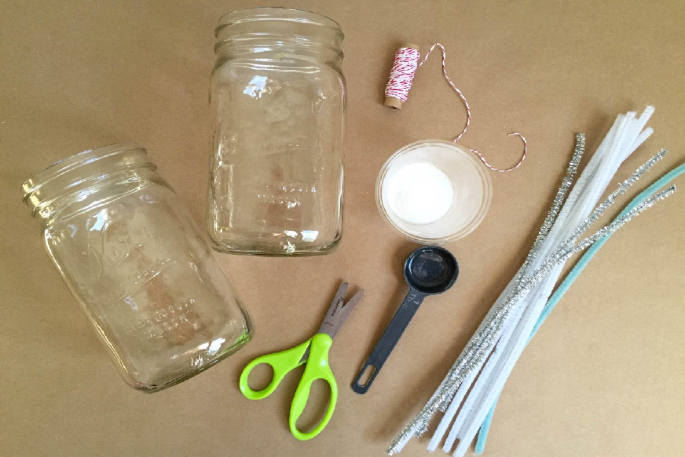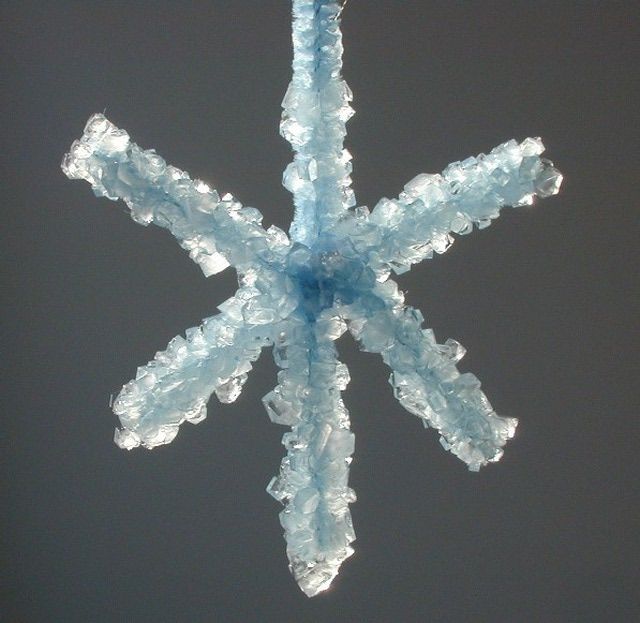 |
Science talk With Chris Duggan House of Science |
Chris Duggan is a scientist, educator, mother of two adult daughters, and farmers wife. After many years teaching secondary school Science and Chemistry, she switched her focus to primary schools by setting up a charity called House of Science in 2013. This large organisation supports thousands of teachers with science resource kits and professional development.
See what Chris has to say in her latest blog below.
Have you ever wondered how crystals are made? Crystals can come in many different shapes and sizes. However, the purest and cleanest of crystals are usually the ones that grow to be the largest.
With this fun activity, using just borax and water, you will not only discover how to make crystals but also create some Christmas decorations for your tree.
NB: This activity involves adult assistance and supervision.

The equipment needed. Photo: Supplied.
Equipment:
- At least 2 Pipe Cleaners
- 2 Pencils
- Borax – this can be purchased at your local supermarket.
- Tablespoon
- Large bowl
- 2 Identical jars or drinking glasses
- Saucepan
- Plastic Wrap
- Ice Cubes
- Water
Instructions:
1. Fill a large bowl half-full of ice cubes and then add water to the bowl until it is about ¾ full. Set this bowl aside for now. If needed, adjust the water level in the bowl so that when you put your jar in it, the water reaches at least two-thirds of the way up the jar, but not so high that water goes into the jar itself.
2. Twist the end of a pipe cleaner around the middle of a pencil. Adjust the pipe cleaner's length so that when the pencil is laid across the top of the jar, the end of the pipe cleaner hangs down to just above the bottom of the jar. Repeat with other pipe cleaners, you can fit more than one per jar if you want. Shape the dangling end of the pipe cleaners into interesting shapes if you prefer.
3. Fill your saucepan with enough water to fill both jars nearly full. With an adult's assistance bring that water to a boil on the stove. Once the water is boiling, turn the element off so the water is no longer boiling. Allow to cool for 5 minutes.
4. Add 1 tablespoon of borax to the water and stir until it dissolves. Continue to add 1 tablespoon at a time until no more dissolves. You will need approximately 3 tablespoons of Borax for each cup of water.
How does the liquid look now? Is it still clear? What happens to the little bits of Borax that won't dissolve?
5. Carefully pour equal amounts of the borax solution into the two jars. Each should be about three-quarters full. You may need to adjust the length of your pipe cleaners around the pencil, to make sure it hangs down into the solution.
6. Cover the tops of jars with plastic wrap.
7. Leave one jar undisturbed on the kitchen bench and the second jar goes into the bowl of ice that was prepared earlier.
8. Do not disturb the jars for at least five hours. However, check the bowl with ice regularly and add more ice if it has melted.
9. Check on the jars every hour to see how the crystals are forming. It may be difficult to observe the jar in the bowl- try looking at the pipe cleaner through the plastic wrap.
Do you see crystals forming on the side of one of the jars? Do crystals form in one jar before the other?
10. After five or more hours, carefully remove the pencils and pull out your pipe cleaners and observe the crystals on the pipe cleaners. If you haven't already, you can carefully shape these into your wonderful Christmas decorations.
11. When cleaning up, the excess borax solution can be poured down the sink, and to get rid of crystals stuck on the side of the jars, these can be washed in very hot water.
The Science Behind the fun:
Borax is a salt (ionic compound), a hydrated borate of sodium. It is a colourless crystalline solid, that dissolves in water to make a basic solution. It is commonly available in powder or granular form and has many industrial and household uses. Like all alkaline substances please handle with care, washing hands after use.
You should have observed that the jar kept in the ice water has more crystals, but those crystals are smaller in size compared to the crystals at room temperature where there were fewer crystals, but they were bigger and had a more cube-like shape.
So what actually happened? You observed the process of crystallisation, which is based on the principles of solubility: compounds (solutes) tend to be more soluble in hot liquids (solvents) than they are in cold liquids. As the borax solution cooled, the borax turned into crystals. A crystal is made up of the smallest units of a molecule that have come together to make a specific pattern that gets continuously repeated. Not only do the borax molecules have to get close enough to each other to make the crystals, but they also have to fit together in the right way to make the crystal pattern.

The finished product. Photo: Supplied.
Extension Activities:
- Try having a go at making crystals out of other substances, such as sugar or table salt. What do you notice about the size and shape of these crystals?
- If you have some food colouring, why not add this to your solution to try and make coloured crystals.

